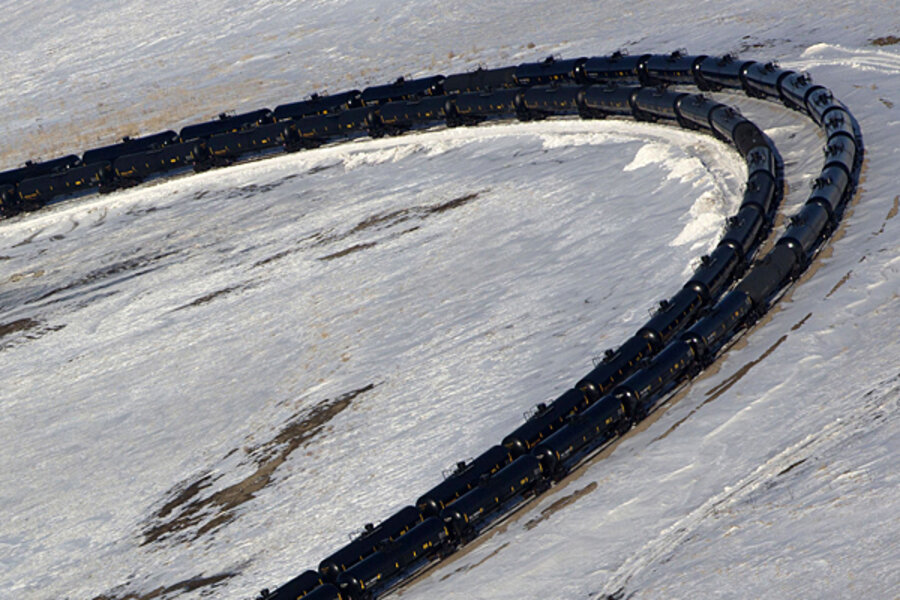Rail vs. pipeline: How should we ship oil?
More than 97,000 rail carloads of crude oil were delivered in the United States during the first quarter of the year. That's 20 percent more than the fourth quarter of 2012 and 166 percent more than during the same period last year. Rail shipments of grain, metallic ores and minerals declined, however. Oil companies are moving more of their oil by rail because pipeline capacity can't keep up with North American production gains. Last week, a pipeline planned from Texas to California was shelved because of the lack of shipper interest, though for rail, there's been relative surge in crude oil traffic. It remains to be seen if that can be sustained, however.
The Association of American Railroads said 97,135 carloads of crude oil traveled by rail in the United States during the first quarter of the year. That amounts to about 68 million barrels of oil over the course of four months. For the week ending May 25, rail shipments overall were down more than 3 percent compared to the same time last year. Grain deliveries were down 21.8 percent and metallic ores and minerals were down more than 10 percent when compared to last year. (Related article: “Peak Rail” – Has the Crude Shipping Train Left the Station?)
Oil companies are turning to rail deliveries as North American oil production overwhelms existing pipeline capacity. Provided the U.S. government approves Keystone XL, it will be at least two more years before 830,000 barrels of oil per day in extra pipeline capacity comes on stream for U.S. refiners. In Canada, opposition to the Northern Gateway pipeline from the provincial government in British Columbia means an uncertain future for the 525,000 bpd project planned by Enbridge.
The American Petroleum Institute reports that U.S. oil production in March increased 13.8 percent year-on-year to 7.1 million barrels per day. For its part, the International Energy Agency said it expected North American oil production to account for more than 60 percent of the gains seen from outside the 12-member OPEC cartel. That suggests the rate at which production is increasing is faster than pipeline construction, federal permits notwithstanding.
Last week, pipeline company Kinder Morgan said it was focusing on rail deliveries from Texas oil fields for the short term. That followed a decision to scrap a pipeline that could've sent 277,000 bpd to California refiners. In March, Phillips 66 said it was "helping to shape the energy revolution in the U.S." by exploring its options for rail loading. Two years ago, BNSF Railway shipped 70,000 barrels of oil from its near Bakken Oil Express, a rail hub servicing North Dakota. (Related article: POLAND: Shale Tax Policy Delay, Little Appeasement for Investors)
The debate over pipelines versus rail hinges on access, price and reliability. Train shipments are more expensive than rail, but rail has more diversity. In terms of spills, pipelines are far more reliable than the alternative, but when a train derails, any oil spilled is typically measured in hundreds of gallons versus thousands of barrels. Kinder Morgan's lack of shipper interest suggests that, for now, there's not much interest in new pipelines, at least from Texas. While much of the argument is, at least in some circumstances, like comparing apples to oranges, for now, it seems trains are winning the race. What happens long-term with more pipeline access, however, remains to be seen.
Original article: http://oilprice.com/Energy/Crude-Oil/Will-Rail-Run-Out-of-Steam-Post-Keystone.html






